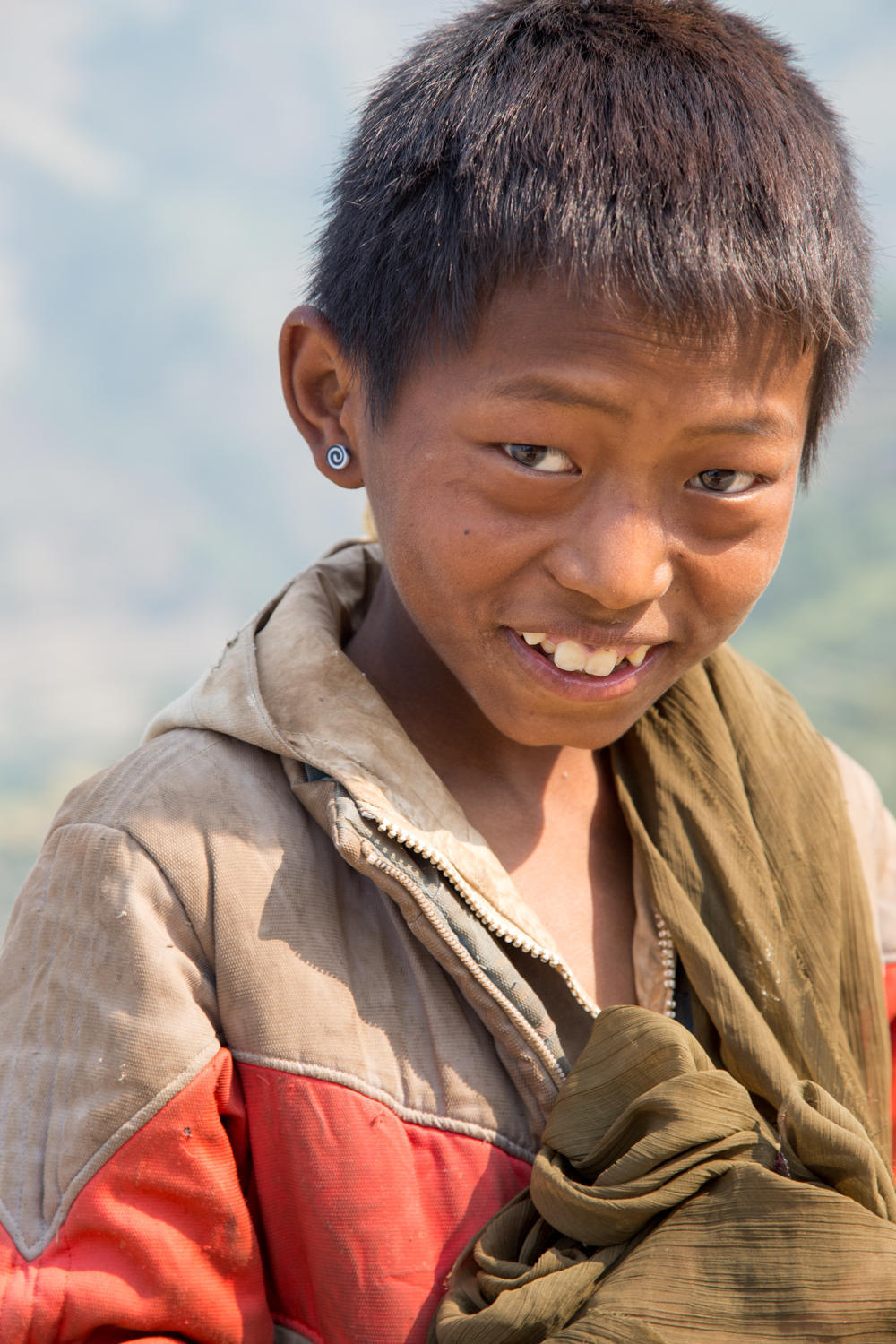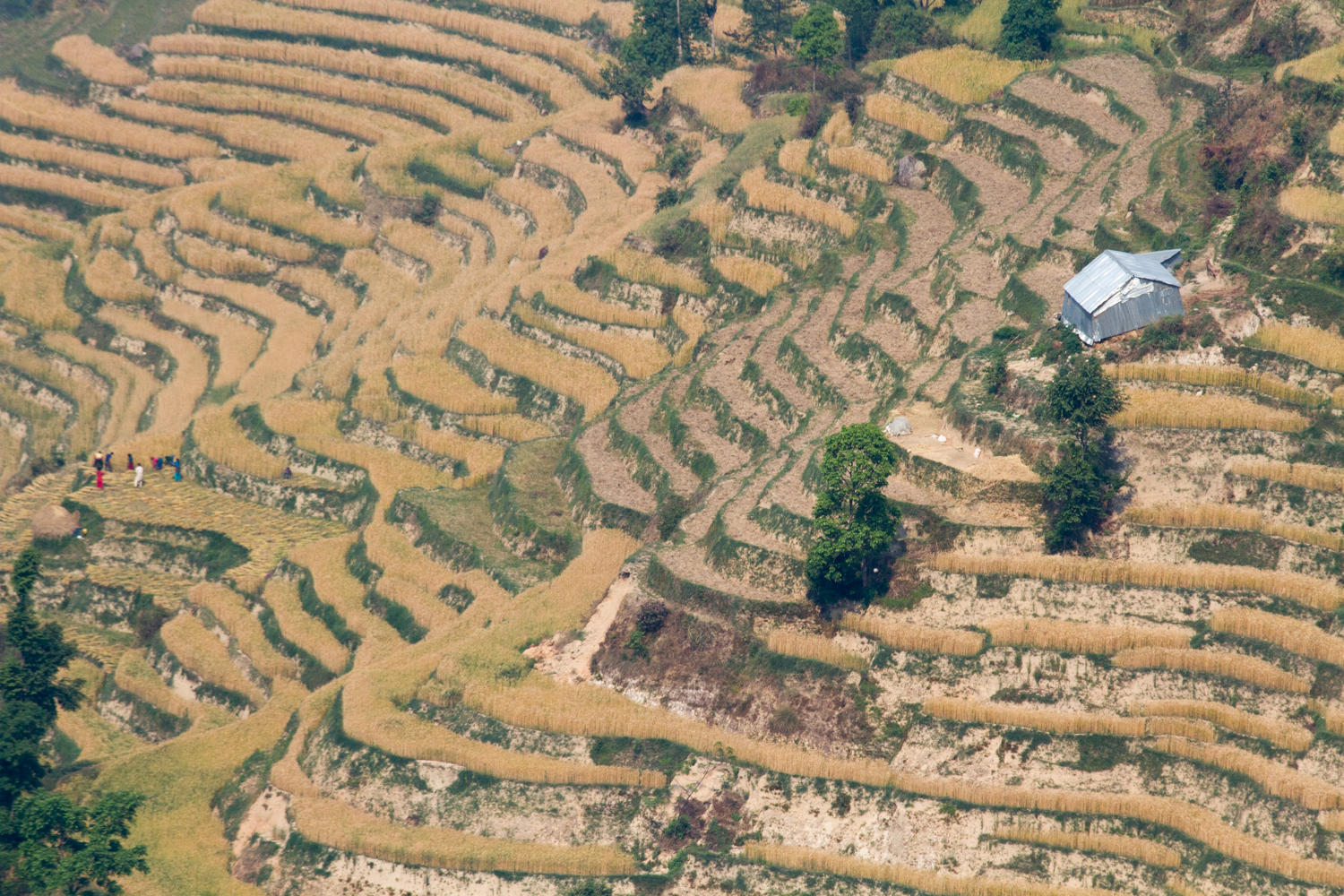April 15, 2016
To Battar: Terraced hills
After rest days, there comes a time when it's time to move on. Today was that time after 4 lovely days in Kathmandu. Cycling into Kathmandu from Kochi India ended stage three of our tour, now is the time to start the next stage Kathmandu to Kashmir. Besides, this past week we were honored that Neil G. featured our journal on crazyguyonabike, guess it's time to do some cycling.
First stop was the bakery just around the corner where we enjoyed good coffee and pastries a couple of mornings this week. We take bread rolls, banana bread and cinnamon rolls for the road.
The first 20kms is a climb up to Kakani on a dusty road, under construction in many places. Rachel says "I need my sunglasses. But I don't think my ears can handle both mask and sunglasses and I don't want to give up my mask". We've gone "native" and wearing masks to protect our lungs from pollution and dust.
As we climb, prayer flags become more prevalent in villages and strung on houses. Through some areas it's hard to tell where prayer flags end and the laundry begins. Five eagles swirl above one curve, and we see buildings converted to chicken farms and ponds of trout farms. In Kakani, before we start the 40kms descent, we stop for a break.
This downhill went much better than the one into Kathmandu, more gentle grade, mostly asphalt but with sections washed out and sandy. What is impressive is the steepness of the hills that are terraced and the depth of the valleys as we snake along the edge of the hillsides.
Wheat is being harvested and laid on the road for thrashing by vehicles then swept up into baskets. Lower terraces are planted in corn and rice. Traffic is less though still on occasion we have to stop to let bus and truck pass each other. About 10kms from Battar, we cross a tributary of the Trishuli river. And all cyclists understand the difference of crossing a river versus following a river either upstream or downstream. Descending to cross a river means climbing up away from the river.
So after 40kms of essentially downhill, we were not expecting this last hill into Battar.

| Heart | 0 | Comment | 0 | Link |

| Heart | 0 | Comment | 0 | Link |

| Heart | 0 | Comment | 0 | Link |

| Heart | 0 | Comment | 0 | Link |

| Heart | 0 | Comment | 0 | Link |

| Heart | 0 | Comment | 0 | Link |

| Heart | 0 | Comment | 0 | Link |
Today's ride: 64 km (40 miles)
Total: 15,716 km (9,760 miles)
| Rate this entry's writing | Heart | 0 |
| Comment on this entry | Comment | 0 |
















